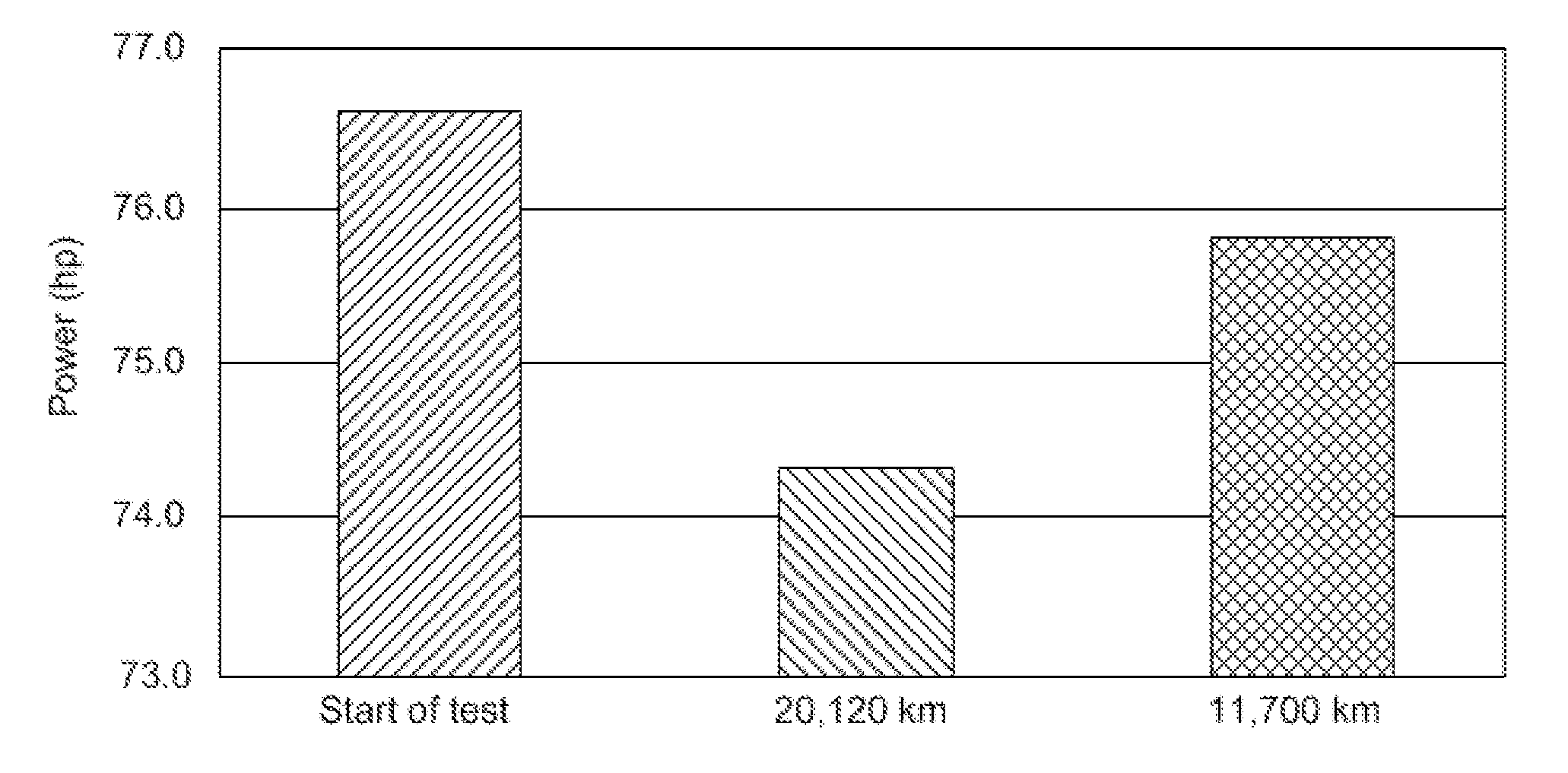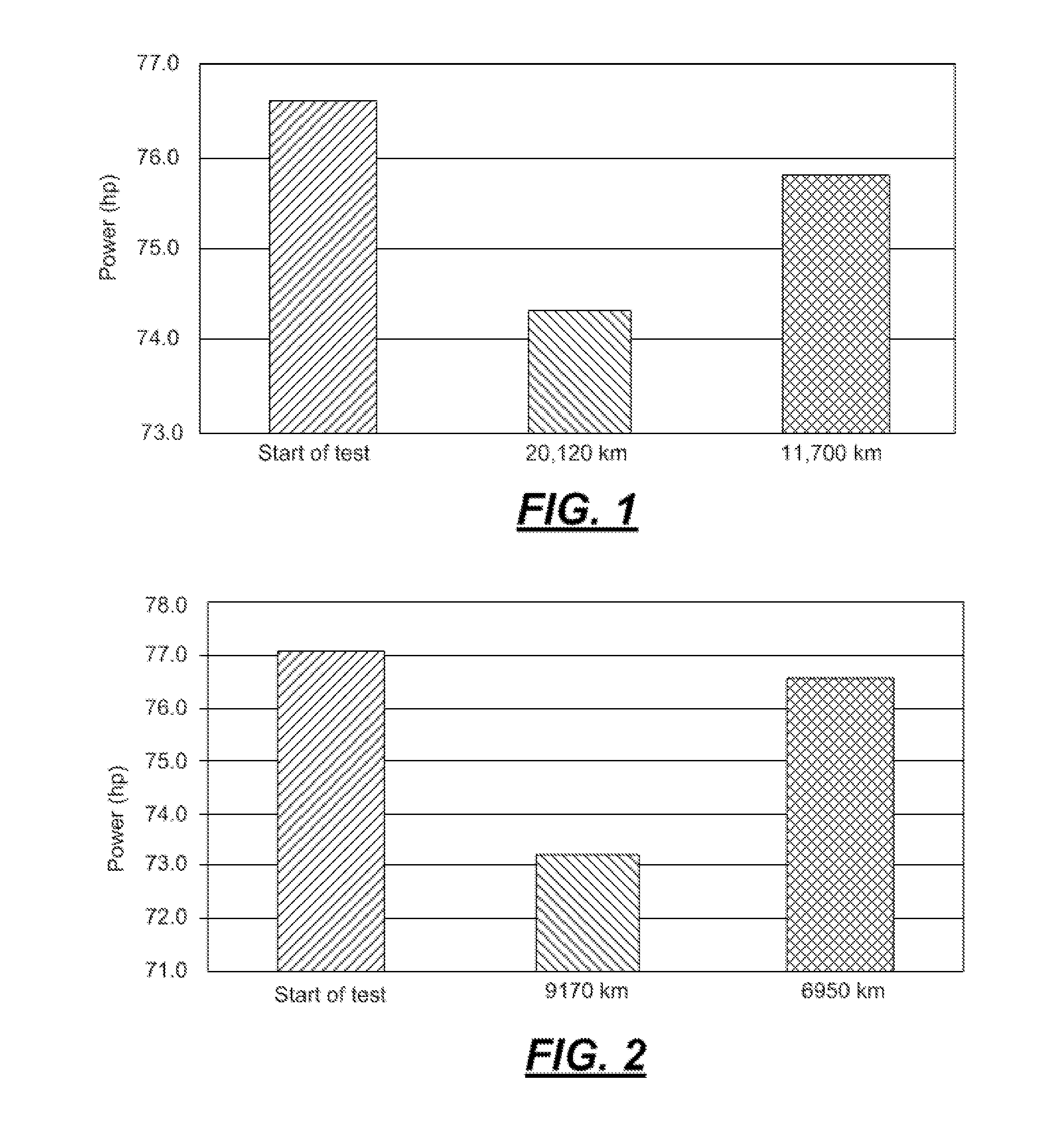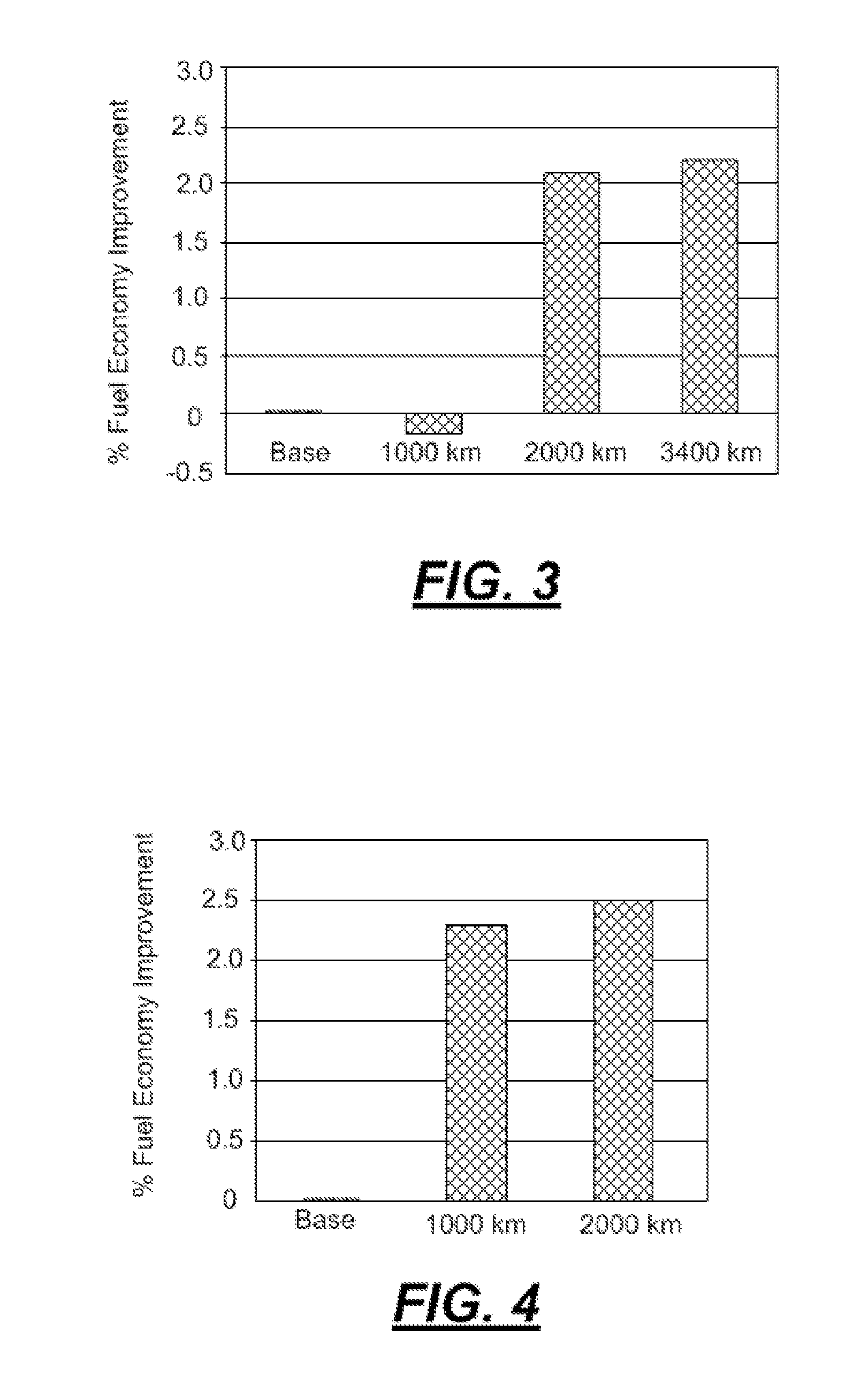Fuel additives to maintain optimum injector performance
a technology of fuel additives and injectors, which is applied in the direction of fuels, machines/engines, mechanical equipment, etc., can solve the problems of unsatisfactory diesel fuel application effectiveness of gasoline dispersants, unsatisfactory cleaning surface effect, and often unsatisfactory dispersant deposits in diesel fuel compositions. achieve the effect of improving fuel economy, reducing the amount of deposits, and improving power performan
- Summary
- Abstract
- Description
- Claims
- Application Information
AI Technical Summary
Benefits of technology
Problems solved by technology
Method used
Image
Examples
example 1
[0057]Using the foregoing procedure, tests were run using a base fuel and the base fuel additized with the additive package of Table 2 and the results are shown in FIGS. 1 and 2. In the figures, Volkswagon Jettsa combusting diesel fuel additized with 407.1 ppm by weight of the composition of Table 2 (FIG. 1) and at 814.2 ppm by weight of the composition of Table 2 (FIG. 2) was used. At the lower concentration of the additive package in the fuel, the power recovery after 7270 miles was about 67%. At the higher concentration of the additive package in the fuel, the power recovery was about 87% after 4319 miles. Accordingly, the additive package of the disclosure was effective in restoring most of the power loss exhibited by a fuel devoid of the additive package after a relatively short use of the additized fuel.
example 2
[0058]In the following tests, the ability of the additive clean up used fuel injectors for a light duty diesel engine was demonstrated. Tests were run with additized fuel using high mileage Mercedes Vito Vans to determine the fuel economy improvement that is provided by the additive package according to Table 2. In FIG. 3, the fuel containing 407.1 ppm by weight of the additive and in FIG. 4, the fuel contained 814.2 ppm by weight of the additive. The higher treat rate of additive provided quicker fuel economy improvement. Overall fuel economy improvement was 2.2 percent in FIG. 3 after 3400 km and 2.5 percent in FIG. 4 after 2000 km.
example 3
[0059]In the following tests, the ability of the additive to clean up used fuel injectors for a light duty diesel engine is demonstrated. According to the test, fuel injectors used for 75,000 km were installed in light duty diesel vehicles and the NEDC fuel economy for the vehicles was determined at the start of the test and after about 700 miles (1100 km) to 750 miles (1200 km). The results are shown in FIG. 5 for fuel containing 407.1 ppm by weight of the additive package of Table 2 and in FIG. 6 for fuel containing 814.2 ppm by weight of the additive package of Table 2. As shown in FIG. 5, at the lower treat rate there was a 4.5% improvement in fuel economy after 750 miles (1200 km) compared to the fuel economy at the start of the test. With the higher treat rate (FIG. 6), there was a 4.9% improvement in fuel economy after 700 miles (1100 km) compared to the fuel economy at the start of the test.
PUM
 Login to View More
Login to View More Abstract
Description
Claims
Application Information
 Login to View More
Login to View More - R&D
- Intellectual Property
- Life Sciences
- Materials
- Tech Scout
- Unparalleled Data Quality
- Higher Quality Content
- 60% Fewer Hallucinations
Browse by: Latest US Patents, China's latest patents, Technical Efficacy Thesaurus, Application Domain, Technology Topic, Popular Technical Reports.
© 2025 PatSnap. All rights reserved.Legal|Privacy policy|Modern Slavery Act Transparency Statement|Sitemap|About US| Contact US: help@patsnap.com



